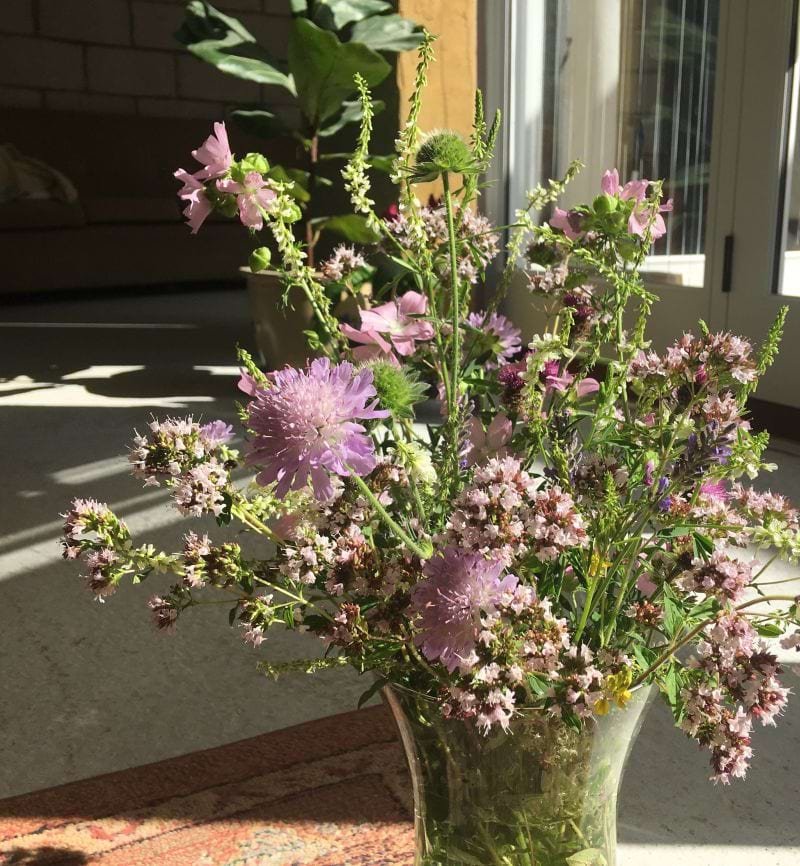How to grow your own cut flowers
What’s even better than a fabulous bouquet of gorgeous blooms sent through the post? The same stunning cut flowers grown in your own garden! Growing your own flowers is hugely rewarding, helps wildlife, is more environmentally friendly, is cost effective… and allows you a justly satisfied smug smile when your friends ask who your florist is.
Stunning displays
Annuals:
A mixture of easy-to-grow tender and half-hardy annuals will give you armfuls of blooms and take you into late Summer and Autumn.
Sweet peas
Gypsophila (Baby’s Breath)
Larkspur
Scabious
Nigella
Ammi
Snapdragon
Zinnia
Cosmos
Sunflowers
Cornflowers
Perennials:
Providing blooms year after year if cared for lovingly, perennials are a great way of having guaranteed flowers in your garden.
Peony
Gladioli
Anemone
Roses
Icelandic poppy
Hellebores
Bulbs:
Ideal for the early part of the growing season.
Daffodils
Tulips
Alliums
Oriental lilies
Foliage plants:
Eucalyptus
Pittosporum tobira
Phillyrea angustifolia
Fennel
Wisteria tendrils
Aim for the same balance you would have bouquet: a third striking showstoppers, a third foliage for contrast and a third back-up flowers to act as a filler.
You can be picking seasonal displays from March until October/November if you select a variety of flowers that bloom and fade in turn as the months go by. With many species, frequent picking and regular deadheading will encourage your flowers to keep on coming – so the more you pick, the more stunning displays you will have.
One of our designers, Nina, enjoys growing a range of plants in containers to cut and display indoors. She recommends Alstroemeria as a wonderful plant to grow for cut flowers due to their ability to flower profusely from Spring until Autumn, while requiring very little care. Secateurs aren’t even required to harvest Alstroemeria as you harvest the flowers by pulling the growth from its underground rhizome.
“Alstroemeria, Gladioli, Crocosmia and Canna lilies in reds, oranges and yellows create a vibrant and colourful display”
450 years of tradition – worth £1.3 billion
In the past, cutting gardens were reserved for the expansive walled kitchen gardens of sumptuous stately homes. When the family was in London for the season, cut flowers were sent down to their city home along with fresh fruit and vegetables. Cut flowers were therefore an aristocratic luxury, beautifully brightening houses lit by dingy gas lamps and at the mercy of coal smog.
In the 21st century the UK market for cut flowers and ornamental plants has been valued at £1.3 billion a year. Around 90% of these flowers are imported – 80% of them from Holland. They need to be transported speedily in a “cold-chain” – a series of refrigerated facilities on farms, trucks, boats and planes – which put them into a dormant state to keep them fresh: for every extra day spent travelling they lose 15% of their value.
Wonderful UK producers
While at Alaster Anderson we do source plants from Europe, we also know of some wonderful UK producers who are pioneering sustainability and seasonality:
Cumberland Flower Farm on the edge of Lake District National Park uses wildlife-friendly techniques without chemicals, plastic-free compostable packaging, locally made compost and sells its plants in coir pots made by a women’s NGO in Sri Lanka (shipped not flown).
The Hiden Collective sells ethical and British flowers for one-off deliveries and subscriptions, with 100% eco wrapping (biodegradable hydrating fabric, reused coffee bags of hessian and recycled Kraft paper). They come with a 100% Happiness Guarantee!
Wolves Lane Flower Company in north London is a micro flower farm with an organic and sustainable approach, growing flowers that are never treated with chemicals or pesticides. “We are excited to be part of a new wave of farmer/florists committed to offering ethical, beautiful flowers while spreading the word about seasonality,” the company says. As well as supplying florists and weddings, it also runs workshops about growing flowers.
Tips for your cutting garden
Grow a range of different flower sizes and shapes: round flowers (ball dahlias), angular species (foxgloves), soft shapes (peonies) and stiffer forms (gladioli and salvia).
Choose flowers that will grow in abundance, and colours that will look spectacular together in a vase.
Make sure you have chosen a position with the right light and moisture levels for your chosen plant (at Alaster Anderson we are evangelists for great soil and carefully considered drainage).
You could choose to have a formal cut flower garden where you grow your blooms in rows, just like with vegetables, and design a planting plan based on the mature height and width of each plant.
Pick in the cool of the evening or early morning rather than the heat of the day so your flowers will be full of moisture and much longer lasting.
And remember (in the words of the Financial Times): “If it all goes wrong or looks horribly out of place there is no great hardship in starting all over again, unlike a bed of permanent shrubs and perennials.”
Finally, here is a magic trick from the glorious Hestercombe near Taunton in Somerset, described as one of the top 20 gardens to visit in the UK: “If you want your flowers to last, trim the ends of your stems and stand them in an inch of boiling water for 20-30 seconds, then place the flowers in a vase of clean, room-temperature water. Stand back and admire your work!” Anything that looks floppy should be seared in this manner although take care not to leave the stems in the hot water for too long.
If we can help you with your garden then please get in touch. You can reach us on 0207 305 7183 or email at enquire@alasteranderson.com







